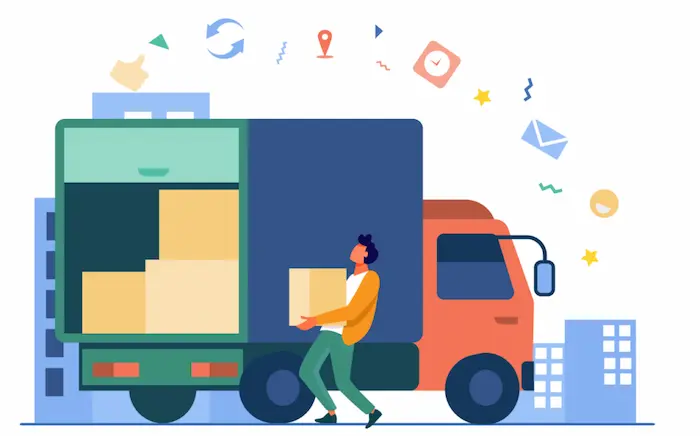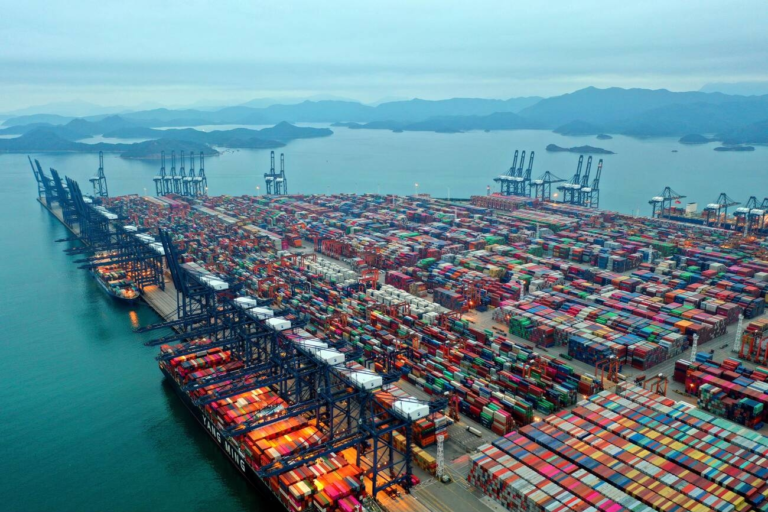Top 5 Emerging Technologies In The US Trucking Industry:
The billion-dollar trucking industry is undeniably a vital part of America’s economy. Every good consumed by Americans, from clothes to food and everything in between, gets transported on trucks at some point- as such it accounts for 72% (or 11 billion tons) of all freight moved across the United States each year!
Lately, the industry is in deep waters. According to American Trucking Association (ATA), the country is in shortage of 80,000 truck drivers, which is at a 30% higher rate than the pre-pandemic level. The industry has been susceptible to decade-long chronic illness of driver shortage, labour retention, and availability. That being said, on the other side, with consumer demand bouncing back into recovery and economies opening up everywhere, jam-packed ports are waiting for trucks that are unable to fulfil their last delivery promise of suddenly demanded goods.

The future of the industry is here!
In the past, companies resorted to strategies like increasing freight capability and manpower, but with supply-chain becoming more dynamic and customer-centric every day, they are relying upon technology to make existing processes smarter and independent enough to overcome the industry’s bottleneck.
1. Advent of AVs (Autonomous Vehicles):
Autonomous vehicles are no longer part of the dystopian future. Reports by McKinsey suggest that the global revenue associated with AVs in urban areas could reach $1.6 trillion a year in 2030 – more than the combined 2017 revenues of Ford, General Motors, Toyota, and Volkswagen! Companies like Alphabet’s Waymo and Tesla are in the continuous process of developing AVs by feeding their AI systems with billions of miles of real-time data, with the vision of accomplishing complete level 5 autonomous vehicles. In the near future, trucks would be just a call away with or without a driver!
2. Platooning technology, the Sky net of trucking system:
Platooning is a subset of Autonomous Vehicle technology that has the potential to settle the decade-long truck driver shortage. Here several automated trucks would be closely connected (physically and digitally) forming a platoon where these interconnected trucks, in turn, would then be operated remotely by AI-powered supercomputers in place. Daimler has been making and testing a prototype of this project using a semi-self driving truck, which was even officially authorized to operate on the public highways of Nevada.
3. Workflows to promote transparency and visibility:
Companies are resorting to technology that can provide advanced supply chain visibility, where a tower view is created for all the interconnected processes in the end-end logistics. By strategically placing shippers in the middle of suppliers and consignees, all the parties are involved in such an ecosystem.
GoShipment by GoComet is one such multi-modal initiative where all the stakeholders like freight forwarders and CHA till the consignee is onboarded on a single deck to ensure that every milestone of the supply chain is captured, supported by dynamically estimated arrivals of shipments and goods at docks and facility centres. Such vast visibility not only ensures that the trucks can be arranged beforehand, but also ensures that these trucks arrive on time before one becomes a victim of hefty detention fees.
4. Digital Marketplace:
Automated freight matching is one way that technology helps drivers book their next load from anywhere on-demand, catering to any ad-hoc inquiries. Companies like Uber Freight and Convoy are building a transparent and comprehensive freight and dray age marketplace where drivers can schedule their preferred loads, routes, and working hours individually. With Amazon’s effect, practices like two day-delivery have become expectations among end consumers, which digital marketplaces would still have a challenge in catering to.
5. Strategic TMS(Transport Management System):
A good Transport Management System ensures that right from procuring freight rates to tracking end shipments, all the processes are streamlined and executed efficiently. A strategic fleet management platform helps in onboarding existing FTL and LTL vendors, digitalizes procurement, and promotes effective documentation of all the freight activities by eliminating hefty paperwork. Today’s trucks are built with advanced GPS tracking systems supported by telematics to ensure that all the statuses of the trucks’ transit are captured and notified to the respective parties. Check out GoComet’s RFQ management module for engaging with unlimited vendors for procuring the best freight at the best rates today!
As the world continues to change and evolve, we also need to adapt. Technology is transforming transport management systems as we know it. It is time for companies to realign themselves with new technologies or get left behind.






